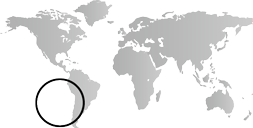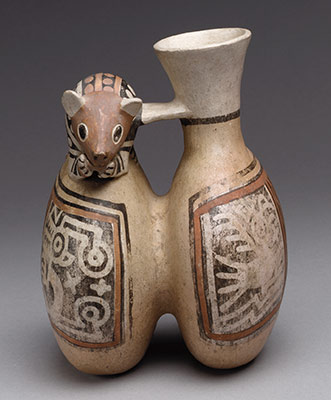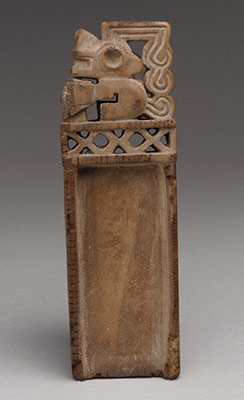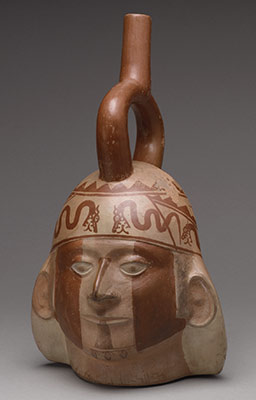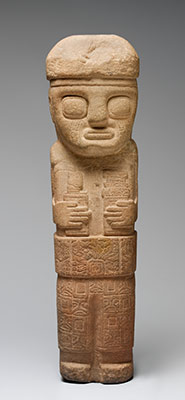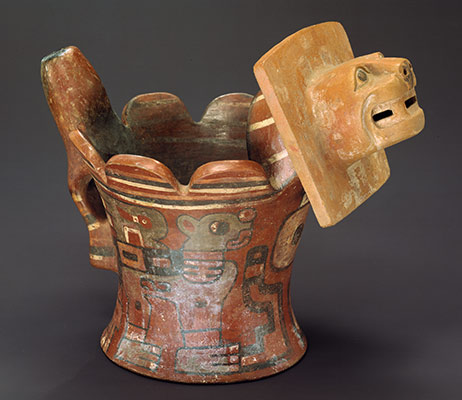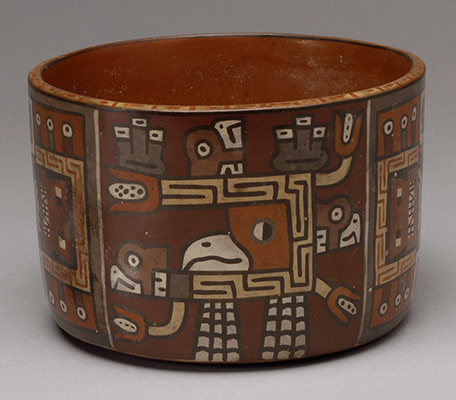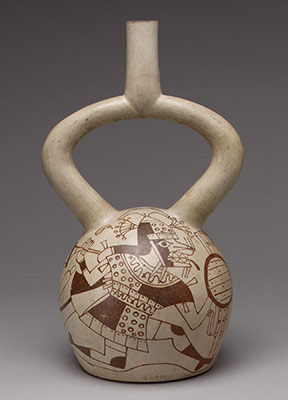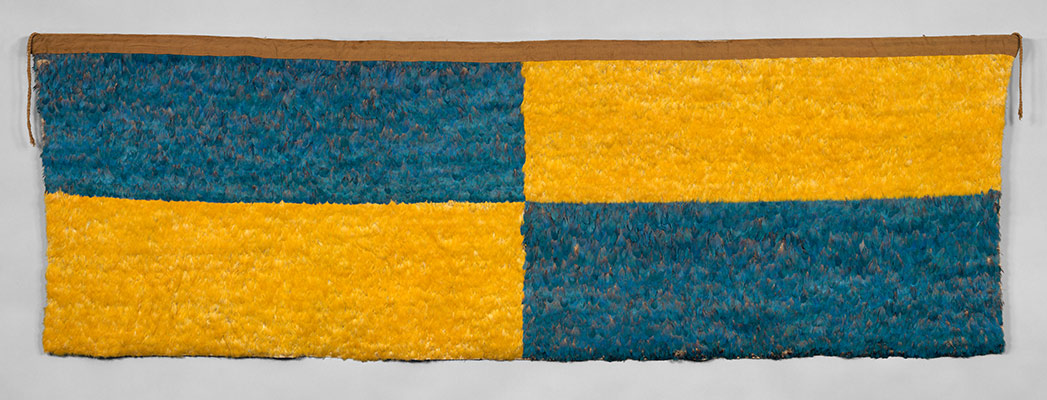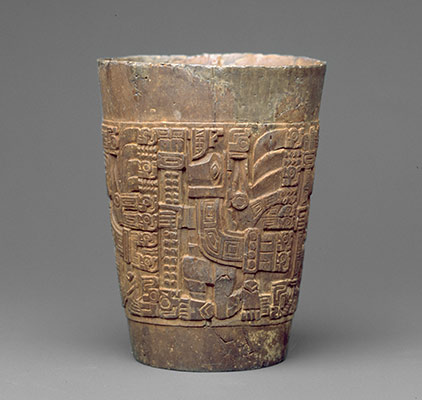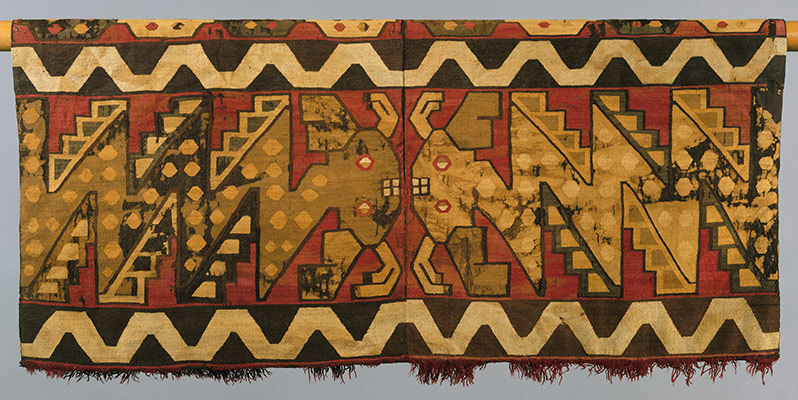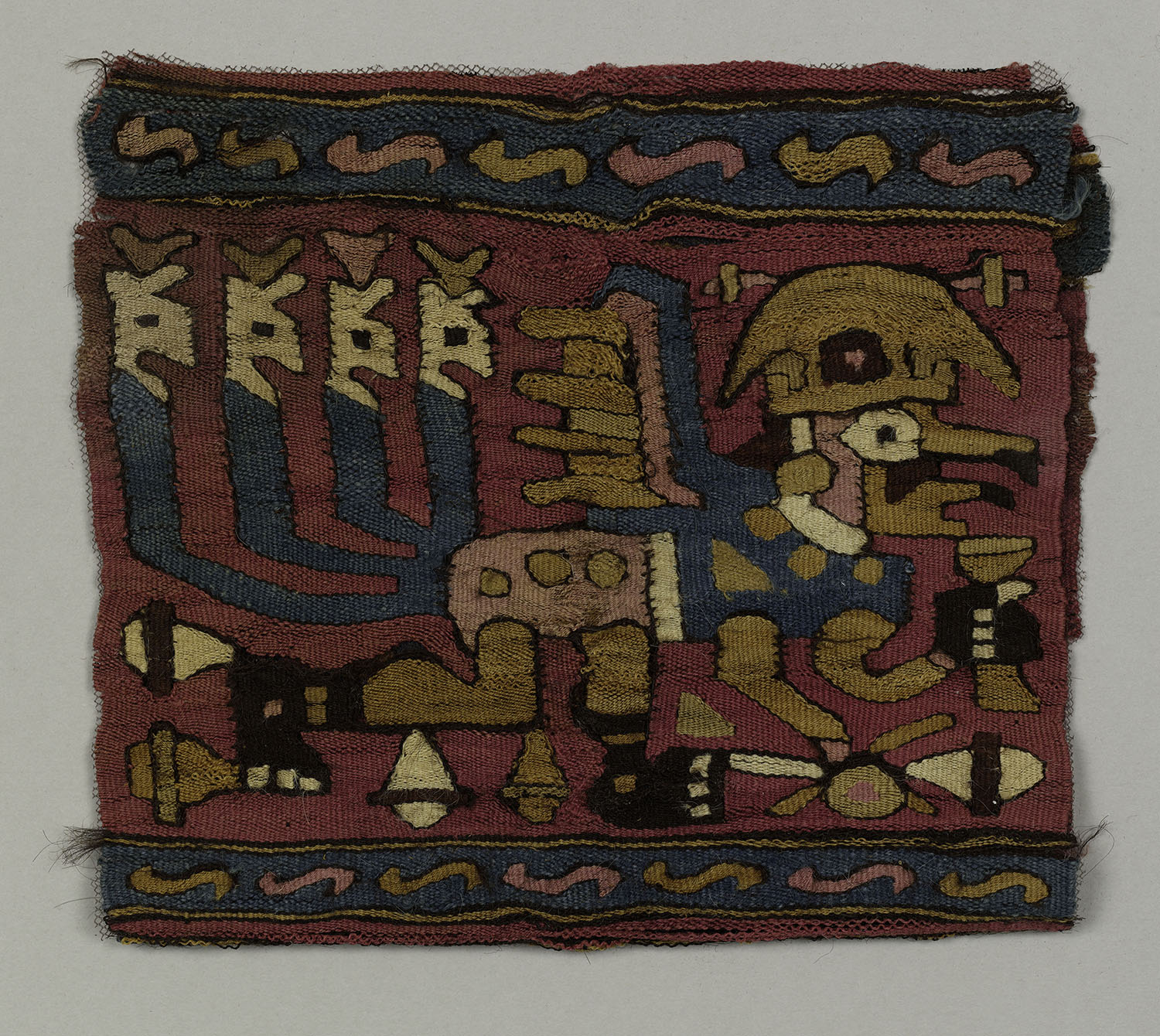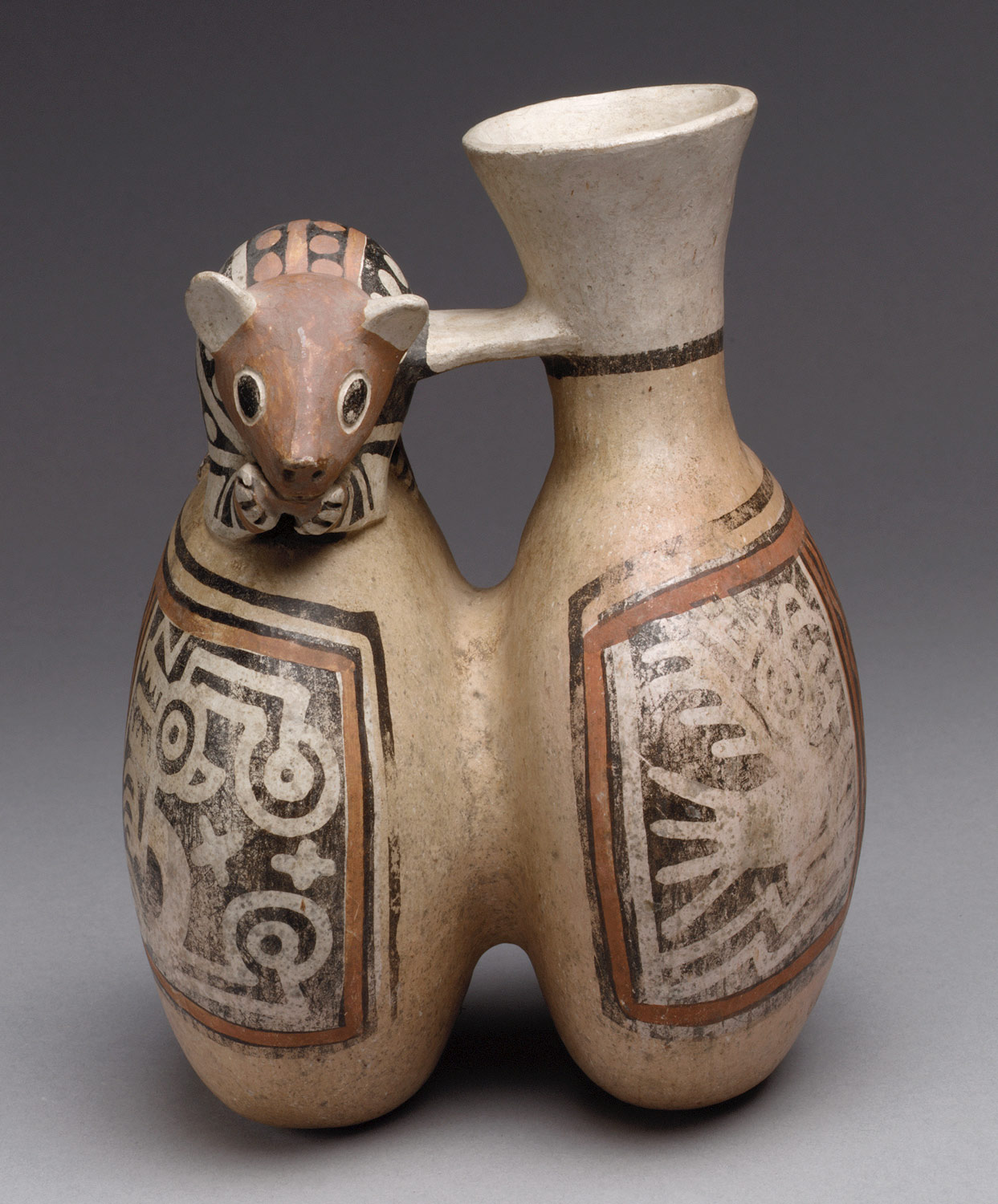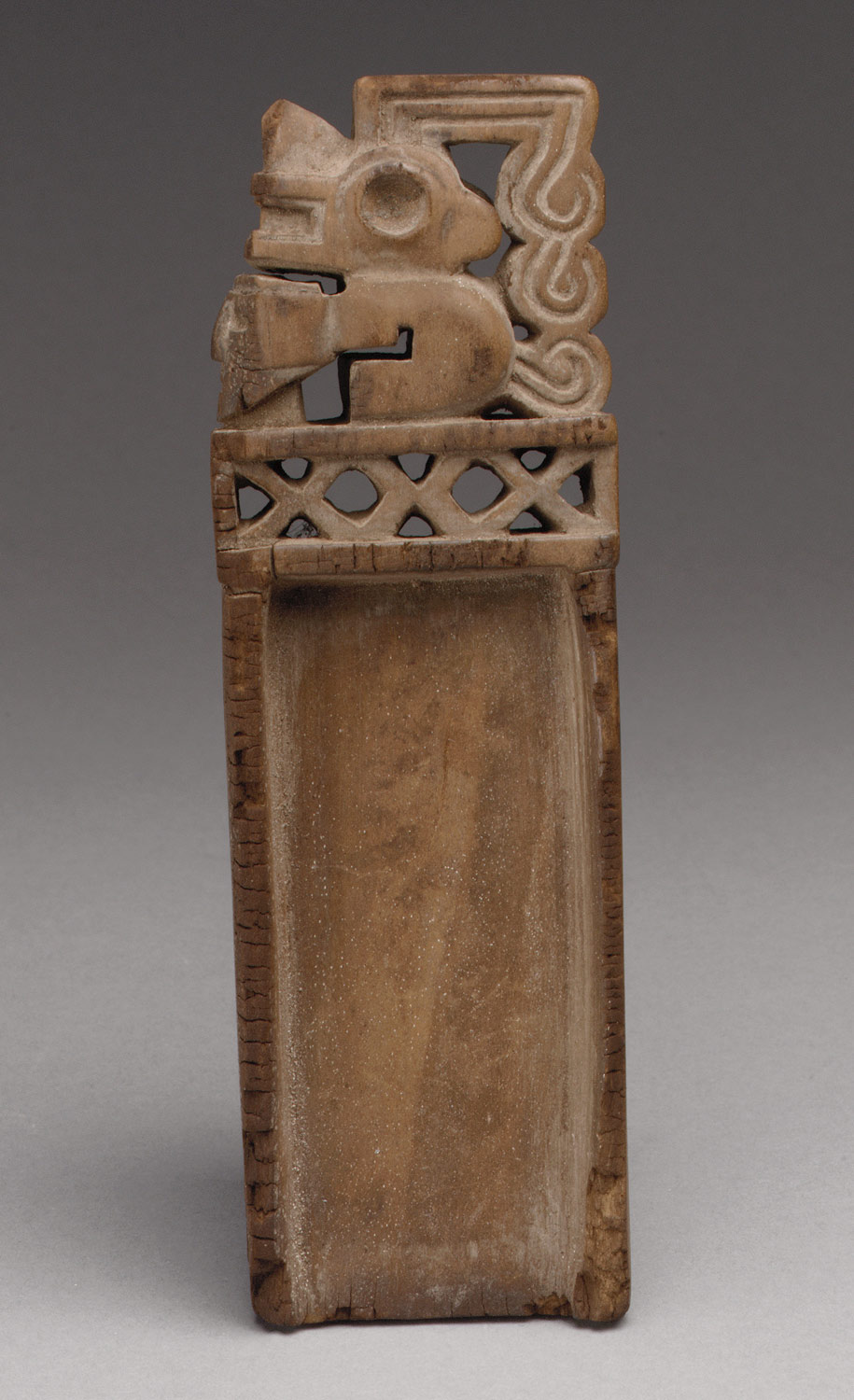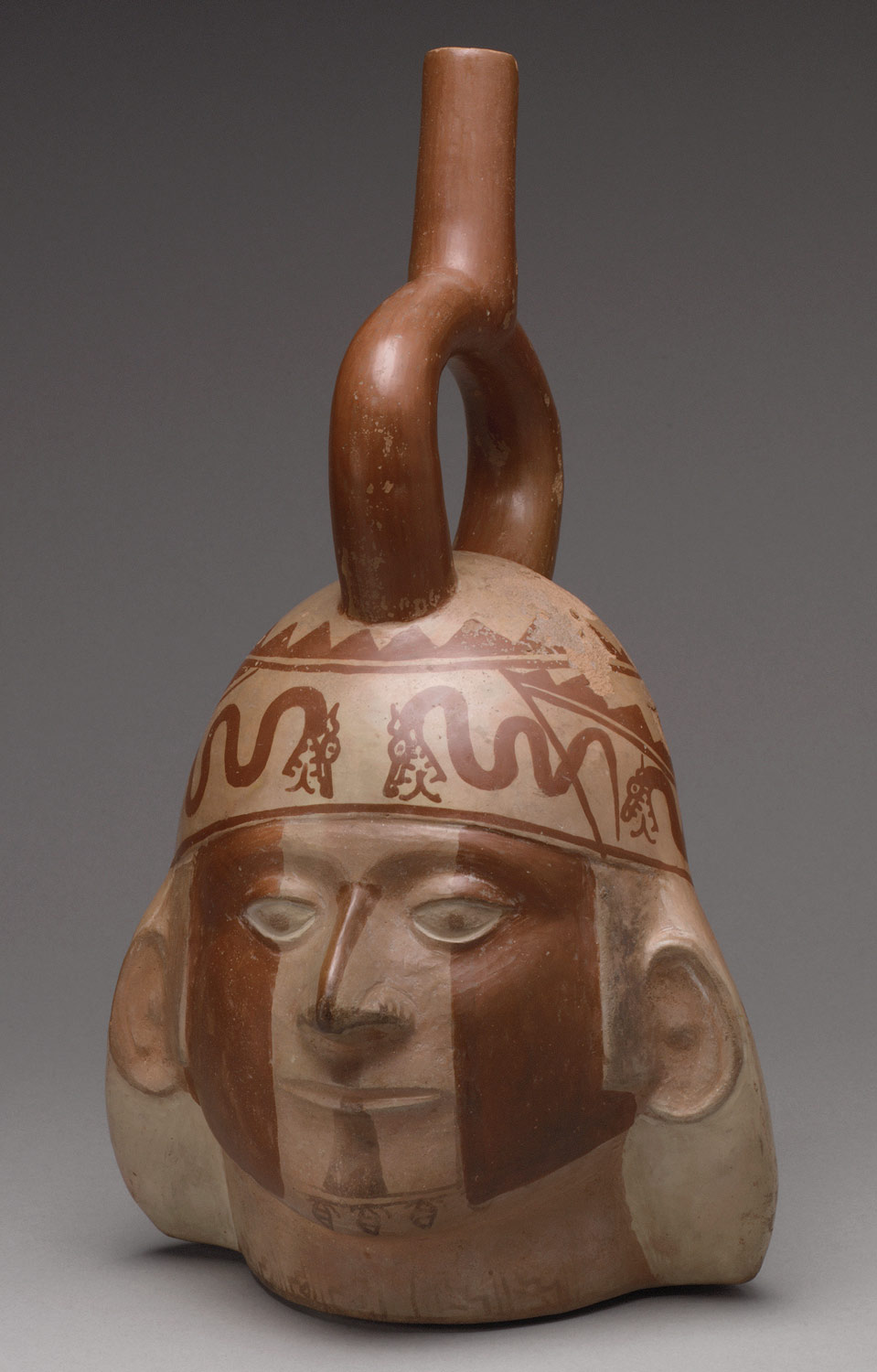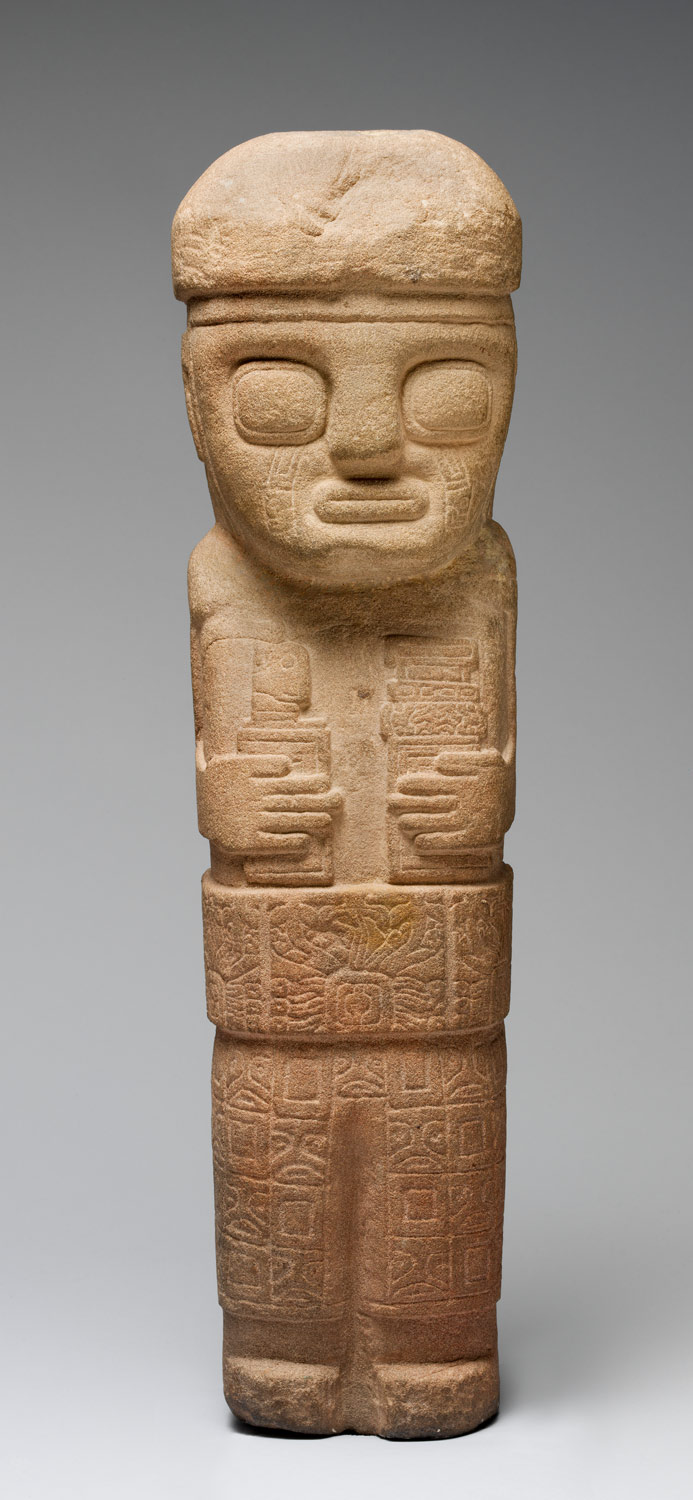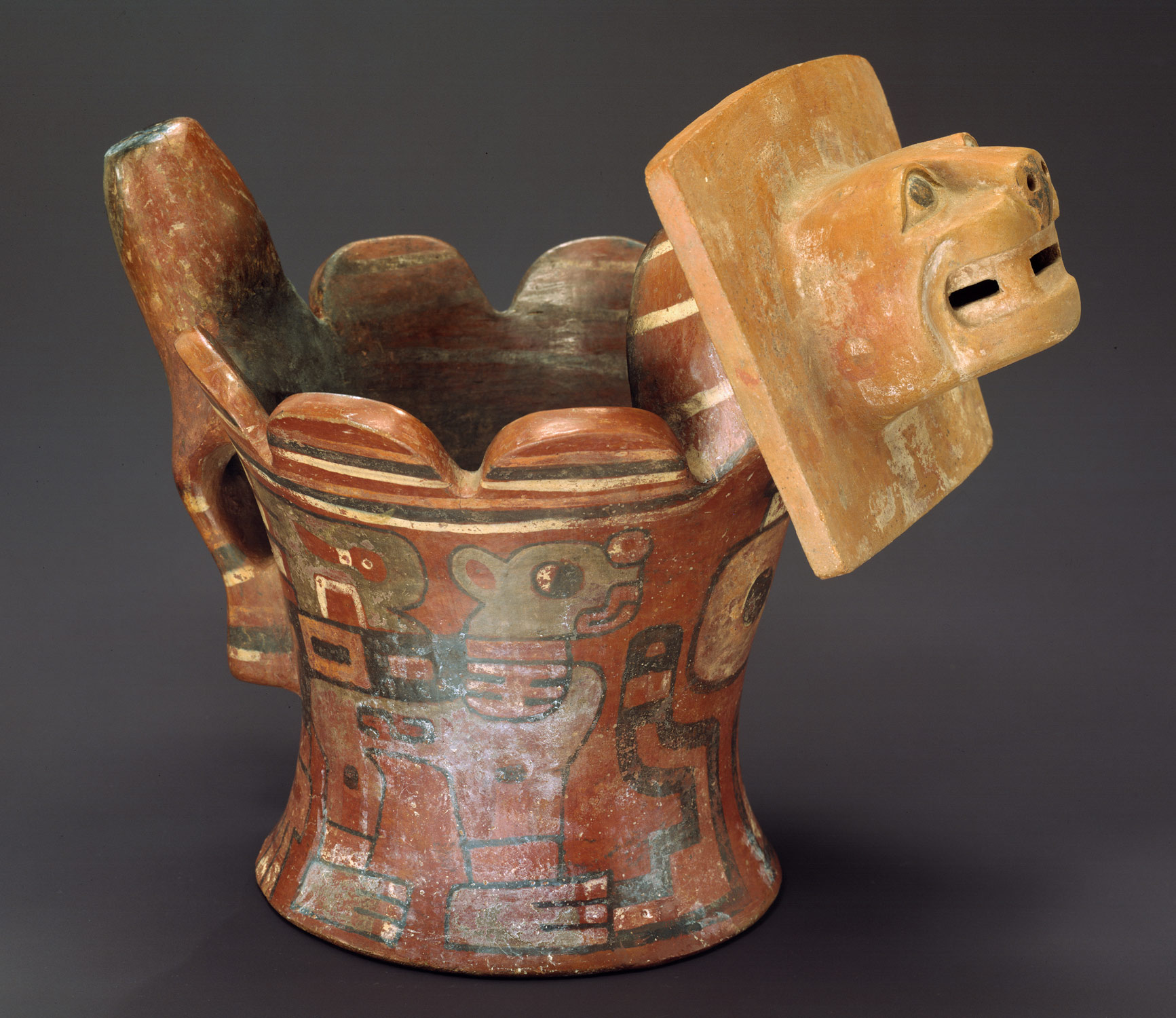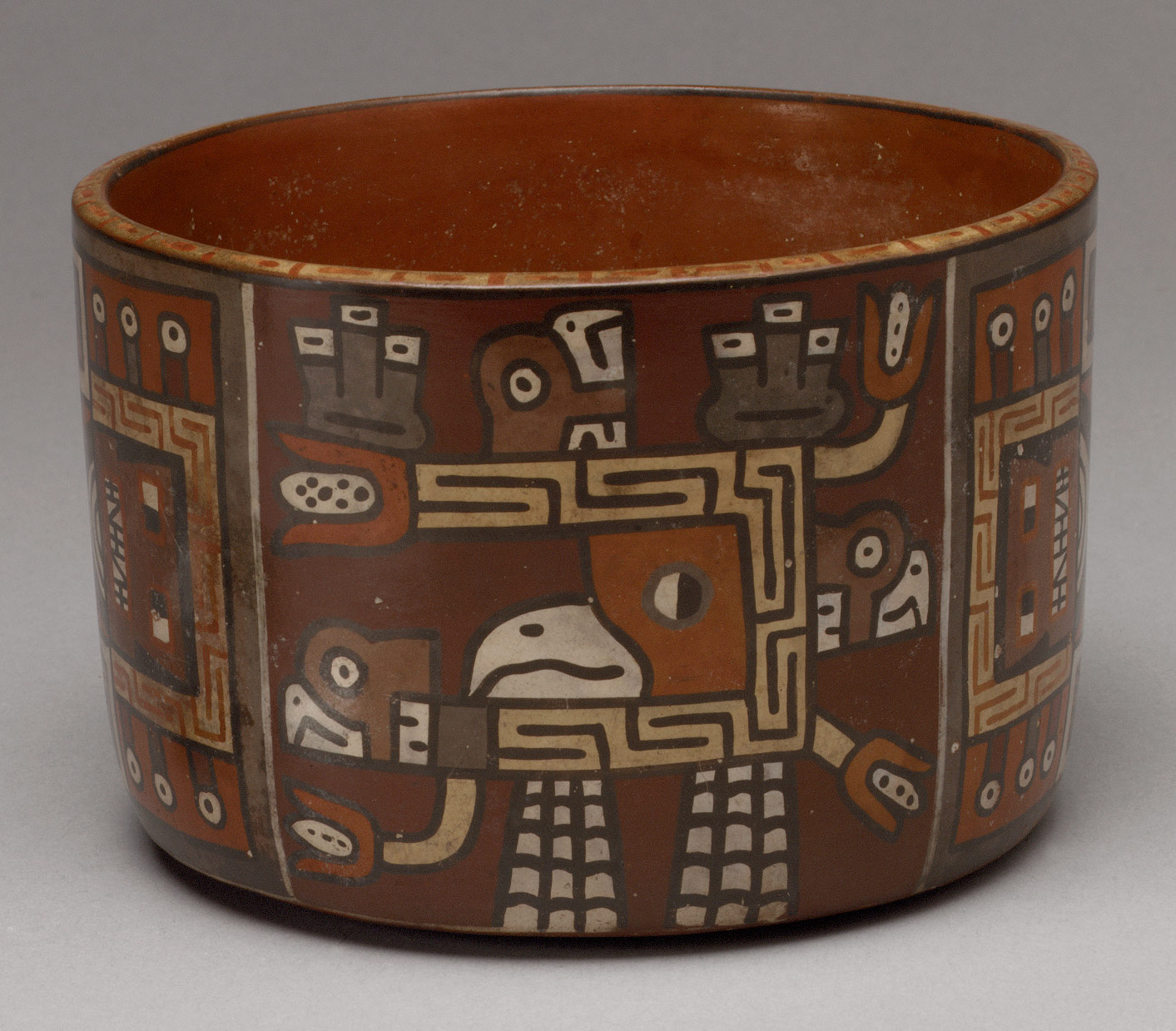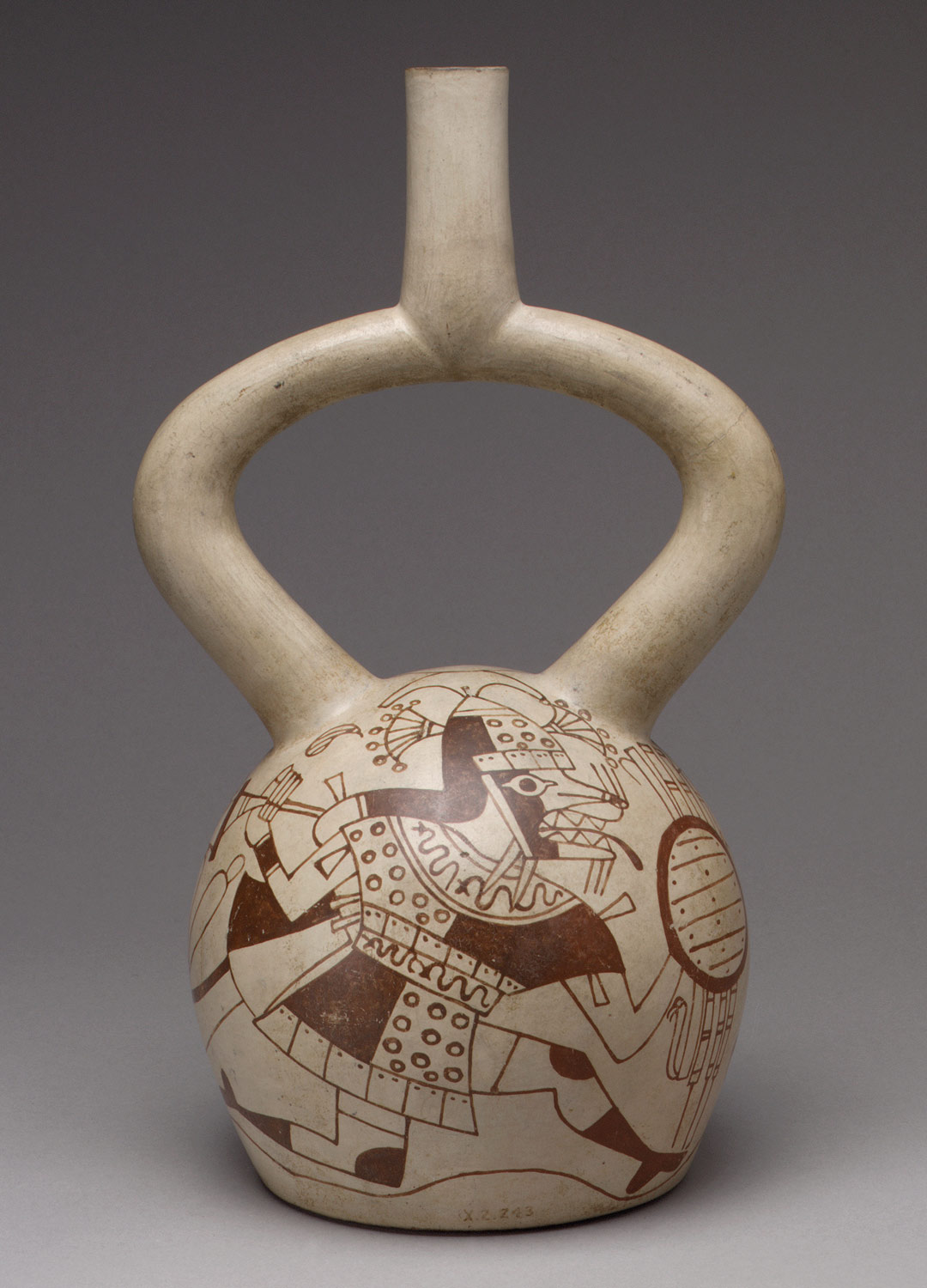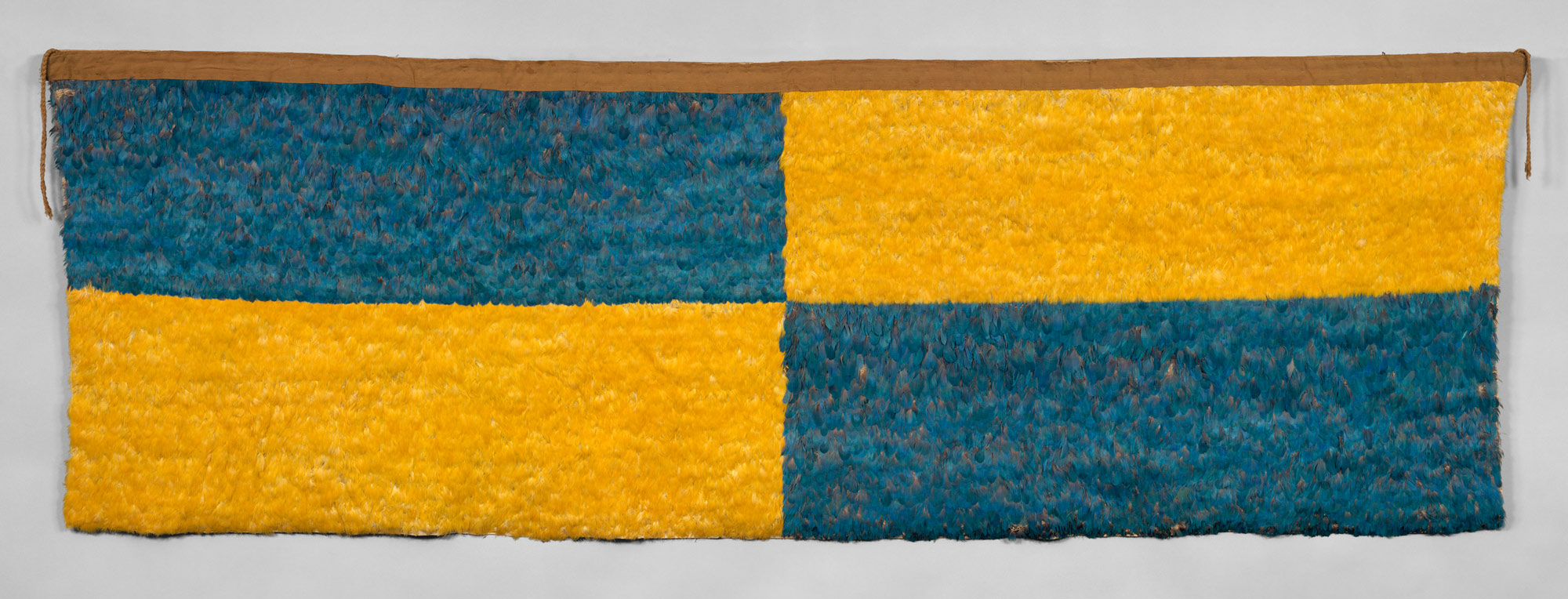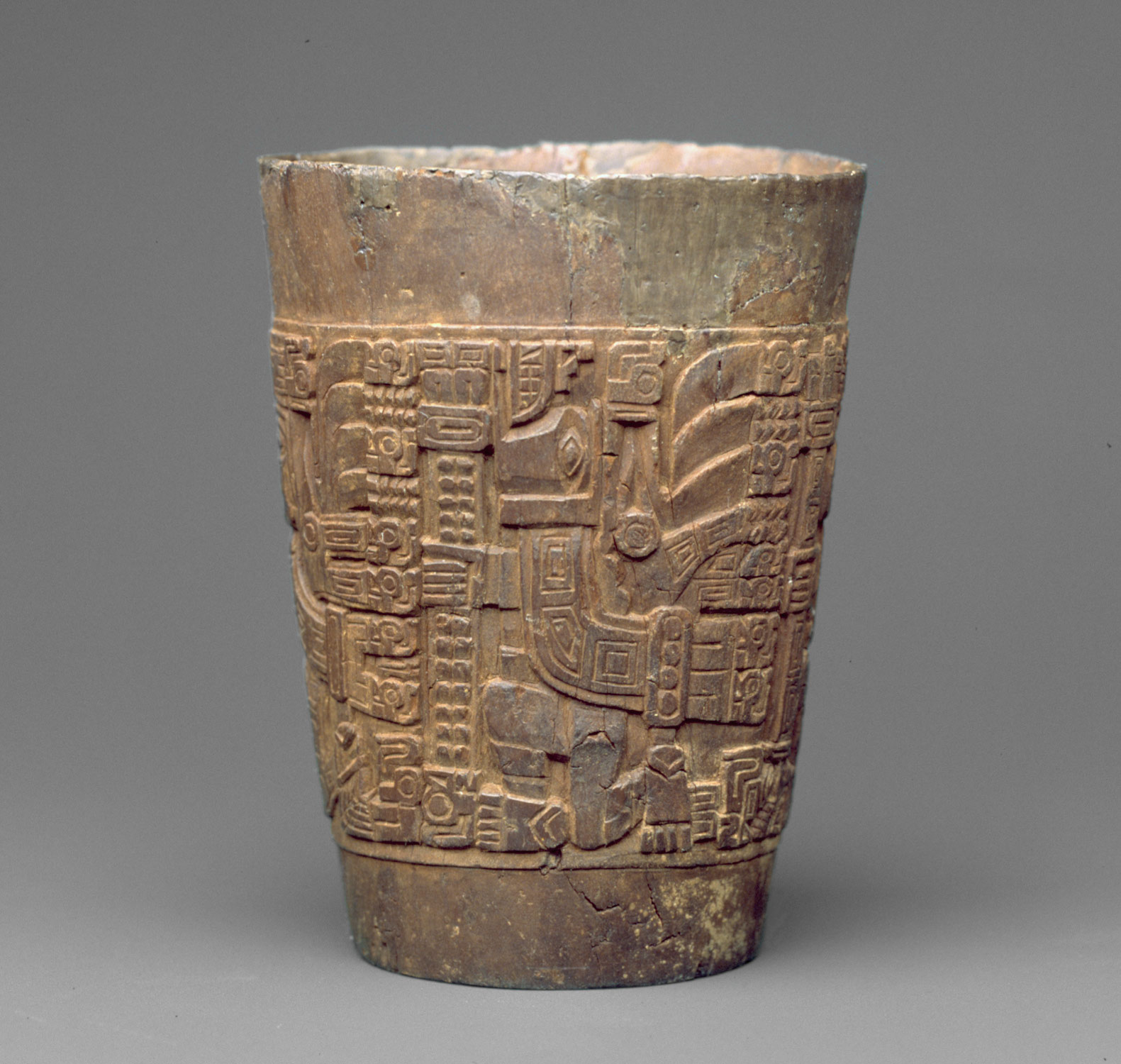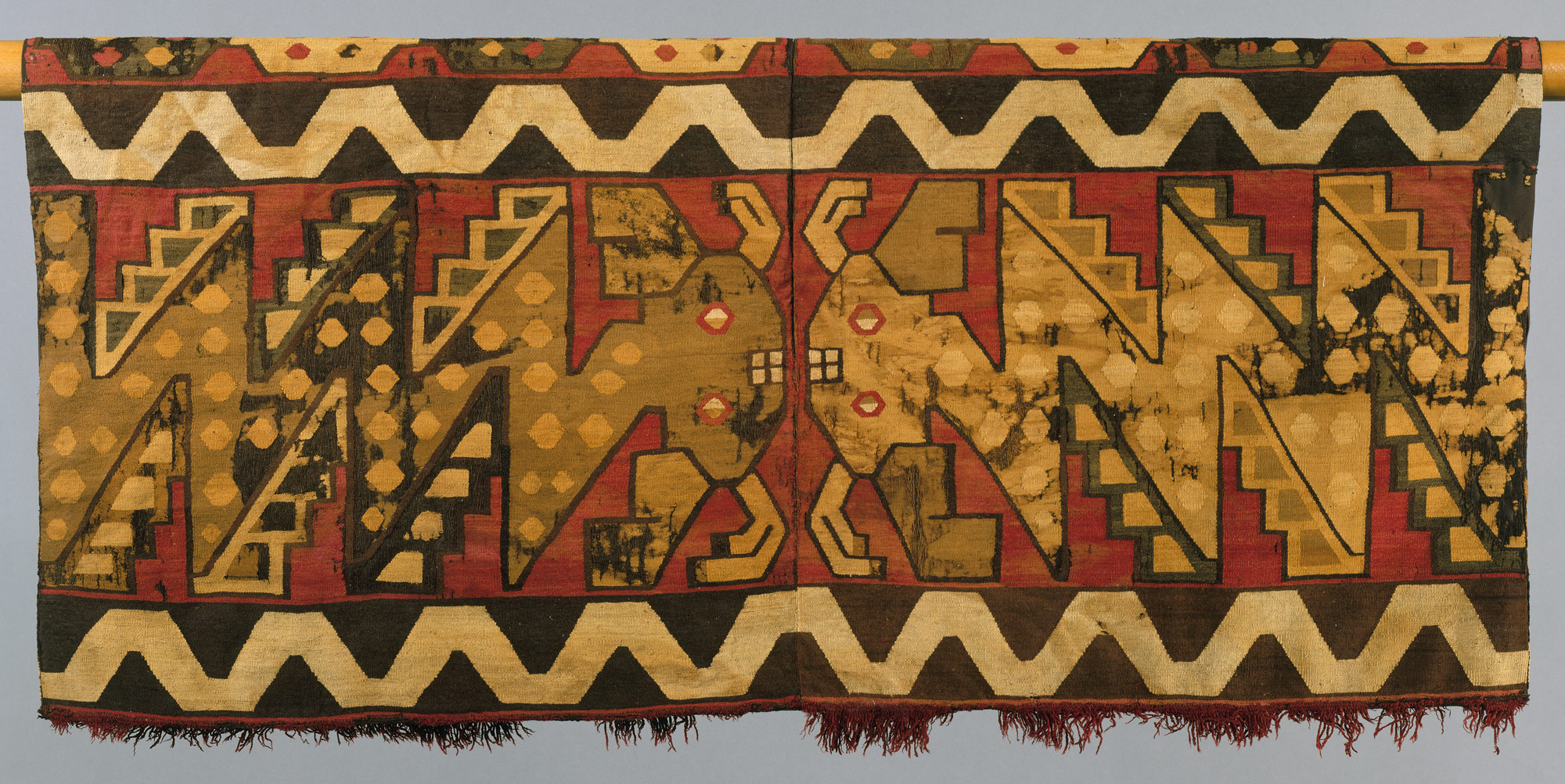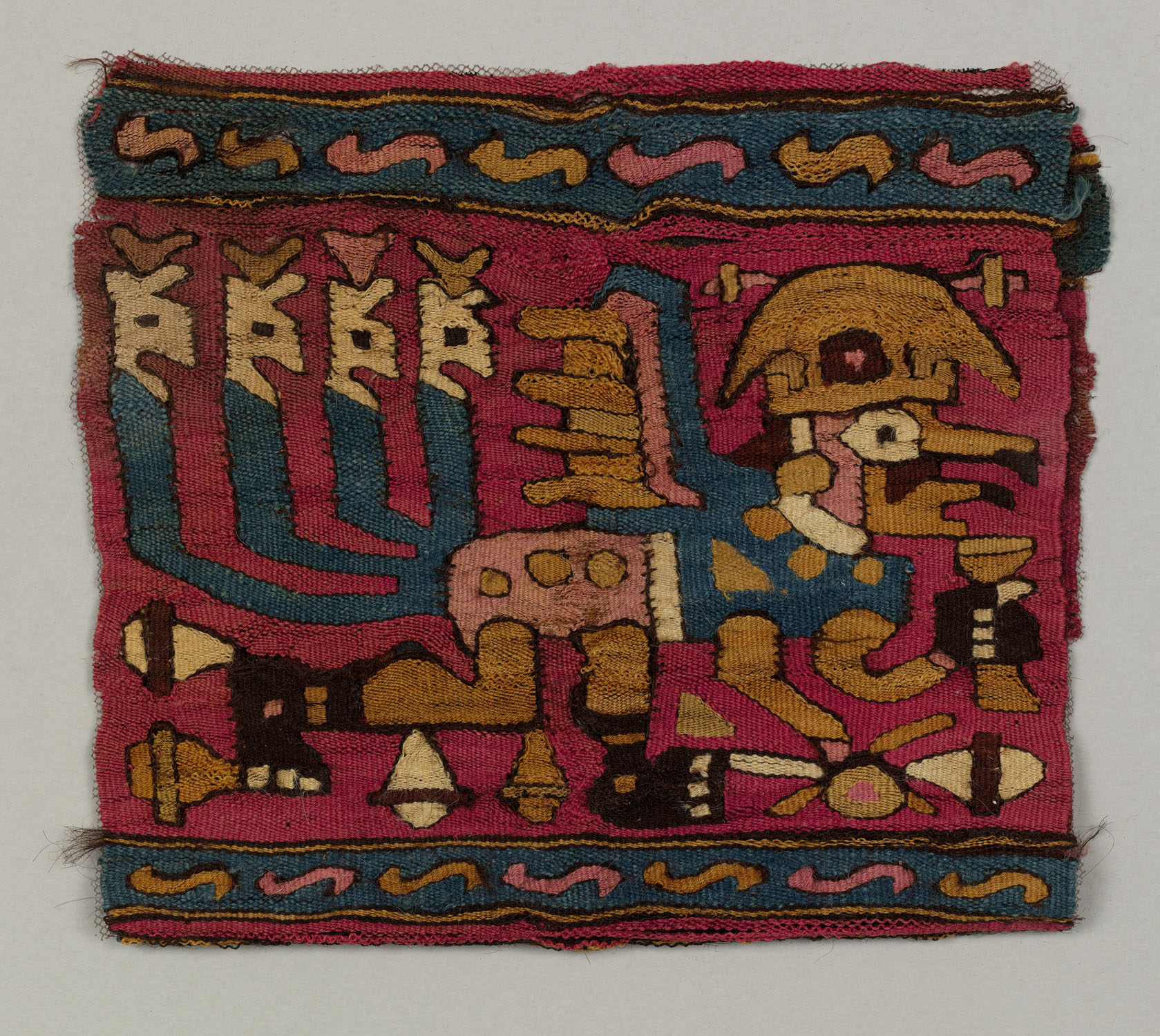Two states rise to power, Tiwanaku in the Bolivian altiplano (high plateau) and Wari in the south-central Andes. Tiwanaku, which may have been inhabited as early as 800 B.C., expands south to Bolivia, northern Chile, and adjacent Peru. Wari extends primarily to Peru’s central and southern coasts. Joined by roads and trade connections, networks of cities and smaller settlements are established in outlying areas. Striking similarities exist among the artworks of the two centers; however, important differences distinguish their architecture, stone sculpture, and urban planning. Ancient myths and beliefs appear to be reinterpreted in Tiwanaku’s religious imagery, and a distinctive new art style is seen in public architecture and sculpture worked in stone. At Wari, Tiwanaku-related iconography is incorporated that focuses on a staff-bearing deity. The deity is depicted in low relief on the monolithic stone Gateway of the Sun at Tiwanaku, where it is surrounded by winged attendant figures. The manufacture of sumptuous textiles, primarily in tapestry weave, and spectacular polychrome slip-painted ceramics reaches a high level of technical excellence. Metalworking, particularly in gold and silver, appears to decline during most of the period; perhaps metals no longer have the prestige they enjoyed in previous centuries, or rulers are less powerful and have lost control over the resources. After 900, metalworking resumes on a large scale.
Central and Southern Andes, 500–1000 A.D.
Timeline
500 A.D.
625 A.D.
HIGHLANDS
COASTAL LOWLANDS
625 A.D.
750 A.D.
HIGHLANDS
COASTAL LOWLANDS
750 A.D.
875 A.D.
HIGHLANDS
COASTAL LOWLANDS
875 A.D.
1000 A.D.
HIGHLANDS
COASTAL LOWLANDS
Overview
Key Events
-
ca. 500 A.D.
The important center of Cahuachi in the Nazca Valley becomes a burial ground and site for special offerings. It has been the location of organized ritual and pilgrimage activity for many centuries.
-
ca. 500 A.D.
The Gateway of the Sun is erected at Tiwanaku. Cut from a monumental, rectangular block of stone, it has a narrow doorway cut through the center. The frieze is carved in low relief with a complex grouping of mythological figures.
-
ca. 550 A.D.
Galindo, a new settlement in the Moche Valley, allows farmers to control irrigation. The settlement, covering two square miles, includes four platform mounds, residences, storage areas, llama corrals, and pottery workshops.
-
ca. 600 A.D.
Monumental stone sculptures are erected at Tiwanaku. In human form, the largest, known as the Bennett Stela, is twenty-four feet tall. The columnlike figures hold ritual implements: a drinking cup called a kero, and a snuff tray. The monumental figures may represent elite lineage founders.
-
ca. 600 A.D.
Wari, built over an earlier Huarpa settlement north of modern Ayacucho in the south-central Andes, is a prosperous metropolis and capital of a rapidly expanding state. Luxury goods such as fine textiles, polychrome ceramics, ritual objects, and personal ornaments in shell, wood, bone, and semiprecious stones are made by artists living in specialized craft compounds within the city.
-
ca. 600 A.D.
A major construction program begins at Tiwanaku. In the city center, many buildings are dismantled and new stone structures are built. The underground system of canals and drains is modified and expanded; sizable elite compounds are built of adobe brick atop cut-stone foundations. They are surrounded by substantial walls. The imposing Akapana Pyramid has seven superimposed, earth-filled platforms of successively smaller size with stone retaining walls.
-
ca. 630 A.D.
Devastating rains associated with El Niño events are followed by long-lasting droughts on Peru’s northern coast, undermining the power of Moche rulers. Floods destroy part of the Huaca del Sol and Huaca de la Luna at Moche. The once thriving capital of the Moche state begins to be abandoned.
-
ca. 650 A.D.
The Wari build administrative centers in outlying provinces, among them Viracochapampa in the northern highlands and Cerro Baúl in the Moquegua Valley in the far south. Wari architecture features include long enclosing walls built of rough field stones that stand up to forty feet high. Rigidly planned compounds, some of two or more stories, have rectangular rooms set around patios. Access to the compounds is controlled by a limited number of streets and doors.
-
ca. 650 A.D.
In northwestern Argentina, the Aguada peoples build on earlier Condorhuasi-phase developments. Their participation in the wider pan-Andean mythology is suggested by dragonlike creatures and staff-bearing figures incised on handsome gray and polychrome ceramics.
-
ca. 700 A.D.
Eight large Wari portrait jars are deposited near the village of La Victoria in the Churunga Valley in the far south of Peru. The jars, almost three feet tall, reportedly contain ninety-six rectangular cloth panels covered with blue and yellow macaw feathers.
-
ca. 700 A.D.
The Wari people invade and occupy the Cuzco Valley in the southern highlands.
-
ca. 700 A.D.
Moche dominance of the northern coast of Peru begins to fade as Wari influence expands.
-
ca. 700 A.D.
Record keeping in the form of sets of wrapped strings using threads of different colors is in use in Wari.
-
ca. 750 A.D.
At San José de Moro in Peru’s Jequetepeque Valley, a Moche priestess is laid to rest in a cane coffin adorned with necklaces, ear ornaments, and bracelets of shell and bone. Her offerings include seventy-three ceramic vessels, and headdress ornaments and a face mask of hammered copper.
-
ca. 750 A.D.
Aguada bronzeworking is highly developed. Characteristic are ceremonial axes and circular plaques of which the most elaborate feature a richly attired frontal figure in relief flanked by two felines with big ears and long, curled tails.
-
ca. 750 A.D.
At Pikillacta, a Wari site south of Cuzco, two offerings of forty miniature turquoise figurines are buried below the floor of a room. Close to a main ceremonial area, the figurines depict clothed males and females wearing headgear and jewelry that indicate social status and identity. They may be linked to an ancestor cult.
-
ca. 800 A.D.
The Sicán peoples in the Lambayeque region on Peru’s northern coast gain power. They produce finely burnished blackware vessels; their shapes and decoration are influenced by both regional Moche ceramics and highland Wari ones.
-
ca. 800 A.D.
Large Wari ceramic jars are intentionally shattered and buried in an offering deposit at Pacheco in the lower Nazca Valley. They are painted with male and female versions of the gateway god at Tiwanaku. Maize, quinoa, and potato plants are also depicted on them.
-
ca. 800 A.D.
A much revered oracle at Pachacamac on Peru’s central coast attracts large numbers of pilgrims. The site becomes urban, with ceremonial architecture, palaces, residential sectors, artisan quarters, and storage areas. It may be the regional center from which Wari religion is disseminated.
-
ca. 850 A.D.
The city of Wari is abandoned.
-
ca. 900 A.D.
Tiwanaku is at the height of its political power and cultural influence. The Putuni Complex in the center of the city is rebuilt. It is thought to have been the palace and court of Tiwanaku’s royal dynasty. An estimated 500,000 people live in the Titicaca Basin and beyond.
-
ca. 900 A.D.
Metalworkers on Peru’s northern coast produce large quantities of arsenical bronze in small pear-shaped smelting furnaces. The durable, hard copper-arsenic alloy replaces copper in the manufacture of tools such as knives, chisels, and needles.
-
ca. 900 A.D.
Five hundred miles south of Tiwanaku, ceramics and ritual objects made by peoples in Chile’s Atacama Desert display stylistic Tiwanaku influences. Wood snuff trays carved with images from the Gateway of the Sun and ritual drinking vessels called keros are common among them.
-
ca. 950 A.D.
Impressive public rituals are held at major shrines and temples at Tiwanaku. Animal sacrifices and offerings of precious goods maintain cosmic harmony and ensure prosperity and security.
-
ca. 950 A.D.
Construction begins at Chan Chan, capital of the Chimú kingdom, on Peru’s northern coast. Chayhuac is one of the first palace compounds built. The large royal compounds, known as ciudadelas, are constructed of adobe brick and surrounded by walls up to thirty feet high. They have only one entrance.
-
ca. 1000 A.D.
At Batán Grande, the presumed capital of the Sicán kingdom in the La Leche Valley on Peru’s northern coast, a ruler is buried almost forty feet below ground at the foot of a stepped pyramid. Four individuals accompany him. The 1.2 tons of grave goods include a large treasure box with sixty head ornaments of sheet gold.
Citation
“Central and Southern Andes, 500–1000 A.D.” In Heilbrunn Timeline of Art History. New York: The Metropolitan Museum of Art, 2000–. http://www.metmuseum.org/toah/ht/?period=06®ion=sac (March 2006)
Related
Map
